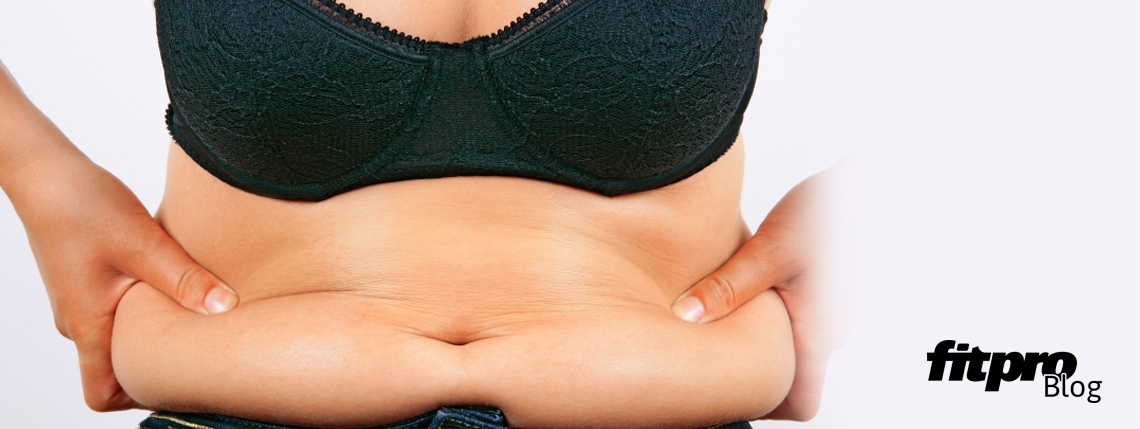Why do men and women deposit fat in different areas? Dr Paul Batman tells us more.
Gary Taubes offers some interesting analysis in his excellent book, Why We Get Fat, which focuses on why women and men deposit fat in different areas.
Throughout our lifetime, fat is constantly being released from our fat cells to be used as fuel. In the event that it is not used, it then comes back to the fat cell where it is stored to be used at another time. Once in the fat cell, the fatty acid is combined with glycerol and two other fatty acids and forms a triglyceride.
When a meal is consumed that contains both carbohydrates and fats, there is an initial release of insulin from the pancreas to control this increase in blood sugar. As more carbohydrate is eaten, there is concomitant increase in insulin release to control the flow of blood sugar.
The insulin opens the door of the cells for the blood glucose to be taken in and stored as glycogen. It is stored in the muscle and the liver as glycogen. If too much glucose is sent to the liver to be stored as glycogen, it will be converted to fat and stored in the fat cells.
As the blood glucose levels start to decrease, insulin levels also decrease and more fat is released from the fat cells for energy at rest. In the intervening periods between meals, more fat will be released and used as fuel.
The fat cell is used as a reservoir. The fat is stored as triglycerides in the fat cells and liver until there is a need to release them again, usually in the absence of insulin. Fat is the preferred source of fuel during rest.
Because of its size, it is difficult for the triglycerides to move through the cell membrane into the blood. It needs to be broken down into fatty acids to move through the membrane into the blood. The reverse occurs when it comes back to be stored; the fatty acids diffuse back into the fat cell and then bind to glycerol and fatty acids to form triglycerides.
The hormone that dominates this action is insulin. While it opens doors of cells to control blood sugar, it also aids in the storage of fatty acids in the fat cell and regulates protein, ensuring that there is enough for muscle rebuilding.
To regulate these processes, insulin acts on the lipoprotein lipase (LPL) and hormone sensitive lipase (HSL) enzymes.
LPL is an enzyme responsible for drawing fat out of the blood and into either fat cells or muscle cells. The LPL enzyme is found on both the fat and muscle cells. On the muscle cell, it forces fat to enter the cell to be used for fuel at a later stage. On the fat cell, LPL draws the fatty acids into the fat cell, increasing its size.
The other enzyme that insulin affects is HSL. This enzyme breaks down the triglycerides in the fat cell so they can escape back into the blood stream. When insulin levels increase, HSL is prevented from breaking up the triglycerides in the fat cell, stopping it from entering the blood stream. This, in turn, traps the fat in the fat cell and increases its size.
The greater the activity of HSL, then more fat can escape the fat cell and be used for fuel and vice versa, and the less stored in the fat cell.
The increased insulin levels also stimulate the movement of glucose into the fat cell, building more triglycerides and further increasing the size of the fat cell. If the fat cells are unable to store any further triglycerides, insulin assists in building new fat cells. This ensures there is always room to store both fat and glucose.
In males, the LPL activity is higher in the fat cells of the belly. As more fat is deposited into the blood, insulin directs more fat to be stored by the LPL, drawing the fat from the blood into the abdominal fat. As men get older and their testosterone levels begin to decrease, LPL activity increases. This is one reason why men put more weight on around their stomach region. Increased testosterone means less activity of the LPL enzyme, which stops it from drawing fat from the blood into the abdominal fat cells.
Women
In women, the reverse is true. Women carry more active LPL enzymes in the fat cells at the top of their hips and bottom, and have low LPL activity in the fat cells of the abdominal region. This causes an increase in fat deposits on the hips and thighs in comparison to the abdominal region. After menopause, the LPL activity of the fat cells of the abdominal region catches up with men due to the lower levels of estrogen.
From this information, it appears that the main regulator of fat metabolism is insulin. The more insulin we release, the more LPL activity on the fat cell that forces the fat in the blood to be diverted into the fat cells. At the same time, the increased insulin also suppresses the activity of HSL, forcing more fat to remain in the fat cell.
In summary, it is very likely that insulin forces fat into the fat cell and decreases the amount that can be burned for fuel. So, if we are trying to lose fat weight, we need to get fat out of the fat cell and burn it initially by lowering our insulin levels.
A simple way to achieve this could be to reduce our carbohydrate intake and replace it with good fat and moderate amounts of protein.








